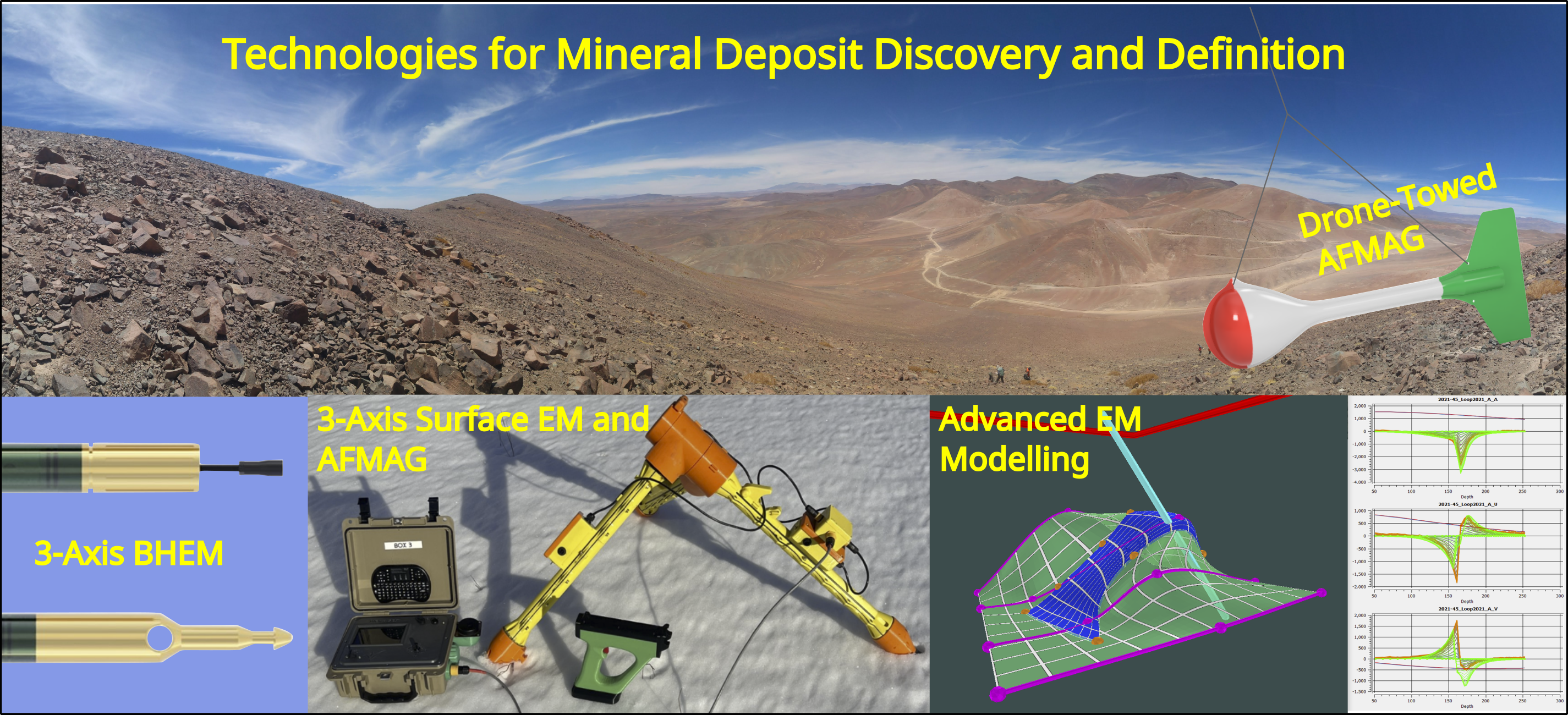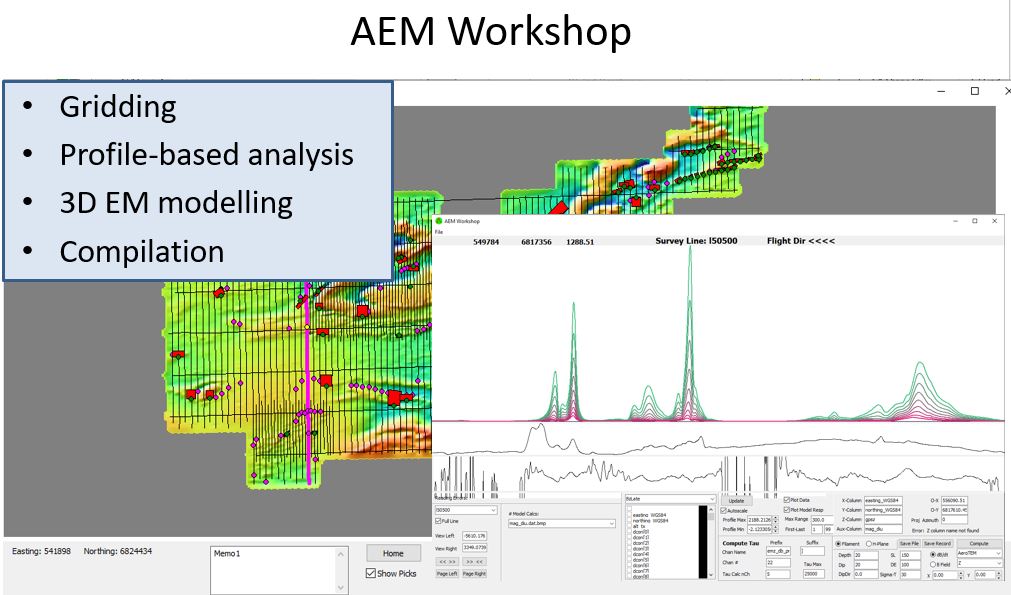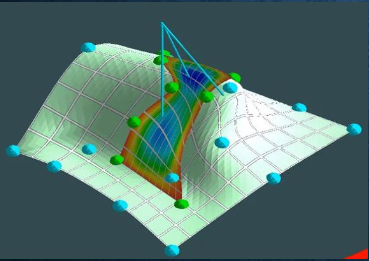
About Novaminex
Novaminex is a Sudbury Ontario-based company focused on improving the pace of mineral deposit discovery and definition through the development of new hardware and software technologies. The group was formed in 2014 to develop geophysical exploration systems and processing methods. It has conceived, prototyped and tested complex geophysical sensing systems for the detection and delineation of mineral deposits from boreholes, from the surface and from airborne platforms. Innovations have been made in areas of sensor stabilization, airborne sensing systems, borehole sensing systems, signal detection optimization and electrical safety resulting in 8 patents.
Novaminex is developing new hardware tools for electromagnetic detection of mineral deposits that can be deployed in boreholes, on surface and from the air via a drone-towed bird. Our software products include the Provus EM modelling software which is capable of handling complex shapes and the AEM Workshop, a one-stop-solution for the interpretation of AEM data for the purposes of identification, analysis and modelling of discrete conductors.
Software Tools
3D Electromagnetic Modelling
AEM Workshop Main

AEM Workshop 1
AEM Workshop 2
AEM Workshop 3
Short Discription
Lorem ipsum dolor sit amet, consectetur adipiscing elit. Ut elit tellus, luctus nec ullamcorper mattis, pulvinar dapibus leo.
Hardware Tools
AEM Workshop Description
AFMAG
Earth Scanner
Short Discription
Lorem ipsum dolor sit amet, consectetur adipiscing elit. Ut elit tellus, luctus nec ullamcorper mattis, pulvinar dapibus leo.
The method of Audio Frequency Magnetics (AFMAG) has been used since the 1960’s for geophysical exploration of the subsurface. It relies on passive measurement of “sferics” the magnetic pulses that are generated by lightning strikes at a rate of abut 50 per second worldwide. These propagate around the earth trapped between the ground and the ionosphere. Locally, these pulses, coming in from different directions, can be used as a convenient source of energy to deduce the electrical conductivity structure of the earth by change in the pulse shape in different directions and at different places. Helicopter-towed AFMAG surveys are available from at least two operators and these provide 3D maps of the conductivity structure of the earth to depths of several km. The NovaScan system uses new approaches to miniaturize the equipment to under 4kg, providing a convenient payload for a drone-towed or backpack-portable system capable of mapping at smaller scales with higher resolution to depths of 1km. The low cost and light weight of the system will make it possible to map lithologies and structures at the stage of geological field investigations giving valuable insights early in the exploration program.

The NovaScan system is comprised of two main components; a towed bird and a fixed base station. The bird is about 2m long and it houses the 3-axis sensor assembly in its bulbous leading compartment with the data acquisition system located in the tail. The bird is towed on a lightweight cable below a drone. During flight data from the 3-axis sensor are logged continuously at a rate of 50,000 samples per second. After each sortie, the data are downloaded to a laptop via ethernet using a port at the rear end of the bird. Power for the system is supplied by removable battery packs that can be swapped between flights.
In parallel with flight operations, data are collected from a separate 3-axis sensor set located at a fixed location with the sensors pointing in the Cardinal directions. The base station can be unsupervised and can collect data continuously all day.
NovaScan software applies well-established techniques for generating transfer functions between related measurements to generate full tensor transfer functions at selected frequencies between 100Hz and 25kHz. At each frequency there are in total 9 transfer functions relating the 3 components measured in flight with the 3 components measured at the base station as well as two transfer functions relating the two horizontal components of the in-flight data with its vertical component.

It is essential that the sensors used for AFMAG surveys have an intrinsic noise floor well below the level of the geo-magnetic field. Novaminex has designed and tested lightweight sensors (~500g each) with a noise floor of just 6fT/sqrt(Hz) at 2kHz. These are AFMAG-capable from 100Hz to 25kHz.

geophysics consulting
Neque quisque ullamcorper nunc, at. Eleifend risus integer sed morbi nibh elementum morbi sem massa. Mi.
geophysics R and D
Software Development


Darlene Robertson

Cameron Williamson



